Jesús Sebastián Lorente
Diplômé en droit, sciences politiques et histoire contemporaine,
Responsable des collections Bibliothèque Métapolitique et Originis de l’éditeur espagnol Fides.
Ex: https://metamag.fr
Carlos Puigdemont, le Président catalan destitué, exilé en Belgique et qui craint d’être arrêté s’il rentrait en Espagne, ne se représentera pas. On a toujours su que c’était un grand courageux ! Son groupe propose donc Jordi Sanchez, le président emprisonné d’une association indépendantiste . La Catalogne, région de 7,5 millions d’habitants est placée sous la tutelle de Madrid depuis la proclamation, restée sans effets, le 27 octobre à Barcelone d’une “République catalane”. Dans un discours pugnace au ton solennel, devant les seuls drapeaux catalan et européen, Charles Puigdemont a fustigé « les abus de l’État espagnol », qui cherche selon lui à “criminaliser l’indépendantisme”. “La Catalogne a gagné le droit à se convertir en une république indépendante”, a-t-il réaffirmé. “Cet objectif est incontournable et c’est pourquoi il faudra continuer à faire de la politique depuis l’intérieur et depuis l’extérieur” du pays», a-t-il dit. Un de nos correspondants en Espagne a souhaité lui répondre. ML.
Souvenirs de la mémoire historique
Le royaume d’Espagne apparaît indissolublement fondé en 1479 avec l’union dynastique des soi-disant Rois catholiques, en fusionnant les couronnes de Castille et d’Aragon. Catalogne, à savoir, l’ensemble des comtés et marques (avec Barcelone à la tête) sous la souveraineté du roi d’Aragon, sera pleinement intégrée avec les autres territoires du patrimoine royal aragonais. Or il n’est pas vrai, comme le soutient certains Français de langue catalane (Alain Santacreu), que le mot Espagne n´était pas d´usage avant 1812. De nombreux documents médiévaux se réfèrent au nom de l’Espagne (parfois, aussi, aux Espagnes) en référence aux peuples de la péninsule ibérique. Lorsque Christophe Colomb est arrivé en Amérique en 1492, il n’a pas baptisé la grande île découverte comme «L’Espagnole» par pur produit de son inventivité.
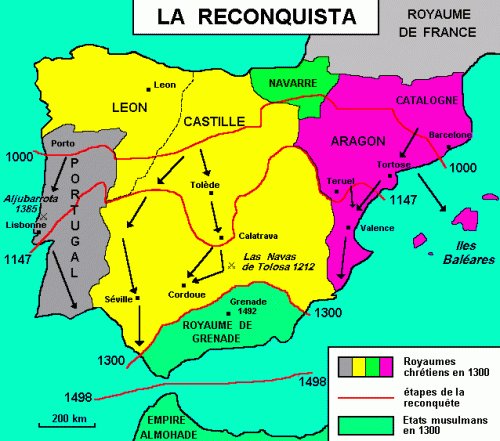
Dénomination d’origine latine (Hispania), le nom de l’Espagne est dû, précisément, aux guerriers et aux colons francs venus aux royaumes chrétiens en quête de prestige militaire ou de terres à cultiver. Américo Castro a défendu le caractère endogène du nom de l’Espagne, à laquelle il a attribué une origine islamique, tandis que celle de “espagnol” aurait une origine provençale. Dans tous les cas, Manuel Alvar a souligné «l´empreinte franque» de ces dénominations, ce qui montre que le nom de l’Espagne est un terme créé et diffusé à partir du Midi français, par opposition à l’«hom de muntanya» (gens libres des Pyrénées) à l’«hom de Espanya» (chrétiens et musulmans des basses terres). Cela ne veut pas dire que l’Espagne était une unité homogène, bien sûr, comme ce n’est pas le cas aujourd’hui. Comme la plupart des grands États-nations européens, en Espagne, il y a eu des différences de peuples et de sensibilités culturelles, ethniques et linguistiques (jusqu’à récemment), mais c’est aussi le seul pays européen qui a été confronté à ce problème (problème merveilleux!) tout en profitant de l’impulsion démocratique, pour culminer en un État hétérogène, composé et complexe dans lequel tous les territoires et leurs peuples ont vu reconnaître leur personnalité particulière.
L’Espagne est-elle un État fédéral ?
L’Espagne est, à l’heure actuelle, l’État de l’Europe avec la plus grande décentralisation territoriale (peut-être aussi, du monde). Aucun État fédéré (de l’Allemagne aux États-Unis) n’a les pouvoirs financiers, législatifs et exécutifs dont jouissent le Pays basque et la Catalogne. Depuis 1978, l’Espagne a opté pour une «autonomisation communautaire» progressive et sans limitations définitives, au lieu d’une «fédéralisation», peut-être à cause des souvenirs négatifs que ce type de régime a suscité dans l’esprit de nombreux espagnols. L’Espagne n’est pas la France jacobine, ni l’Italie régionale, ni l’Allemagne fédérale. L’Espagne est ‒et cela est vérifiable politiquement et juridiquement‒ l’État-nation qui a accordé une plus grande autonomie à ses nationalités et régions historiques. Les Communautés autonomes en Espagne jouissent de toutes sortes de privilèges politiques: leur propre finance, leur propre budget, une éducation autonome, la santé, la police, la liberté des radios et des télévisions publiques … et, bien sûr, l’officialité de leur propre langue (catalan, galicien, valencien, euskera, mais aussi l’asturien et l’aragonais, dans une moindre mesure). Ce fut un engagement espagnol clair en faveur du bilinguisme que les autorités catalanes ont déjoué tout en discriminant l’espagnol (ou le castillan, comme ils préfèrent l’appeler) au profit de l’unilinguisme catalan. Est-ce qu’un Français accepterait qu’en Bretagne ou en Roussillon, seul le breton ou le catalan soit parlé et que le français soit déplacé des médias, des écoles, de l’administration, des entreprises, de l’université…?
Désinformation sur la «question catalane»
Dans le monde globalisé où l’information est disponible pratiquement à temps réel, je ne pense pas qu’il soit nécessaire de rappeler la situation que traverse l’Espagne avec l’«affaire catalane» même si on aura remarqué comment l’information est aujourd’hui suspecte, n’approfondit jamais rien parce que surfant en temps réel sur la vague des événements. On a évoqué en France à propos de la réaction du gouvernement espagnol, les « heures sombres » de l’histoire de la péninsule, Franco et tutti quanti. Certains Français, comme M. Santacreu, n’argumentent plus mais anathématisent, ils parlent par exemple de «déclaration caudillesque de la destitution du gouvernement catalan » ou « d’application martiale de l’article 155 de la Constitution». Caudillesque! Martiale! Or, en Espagne, il n’y a personne avec le traitement de caudillo. En Espagne ne régit plus la loi martiale, mais la Constitution. Et en parlant de la Constitution, n’est-ce pas la loi suprême qui se doit d’être appliquée? Pourquoi les Français se sont-ils donc étonnés de l’application d’un de ses articles? Tous les actes et manifestations des autorités et des politiciens catalans dans le soi-disant «processus vers l’indépendance», y compris la déclaration de celle-ci, constituent une preuve (pas un indice) ‒ télévisées et retransmises en direct‒ d’avoir commis les crimes graves de « rébellion » et de « sédition ». Ou bien n’y aurait-il plus de « crimes politiques » ?
Bien sûr, l’Espagne « martiale et caudillesque », dans son empressement à détruire l’identité catalane, permet curieusement l’existence de partis indépendantistes qui menacent l’intégrité territoriale de l’État et, gracieusement, les récompense avec un régime électoral qui va jusqu’à donner la préférence à ses résultats dans les élections régionales. Il s’avère que ni l’Allemagne, ni la France, ni le Portugal ne tolèrent l’existence de partis indépendantistes (qui bien entendu aspirent aussi à la sécession d’une partie du territoire national). En Allemagne, de tels partis sont simplement considérés de facto comme illégaux. En France, la Constitution stipule que « La France est une République indivisible (…) La souveraineté nationale appartient au peuple (…) Aucune section du peuple ni aucun individu ne peut s’en attribuer l’exercice (…) Les partis et groupements politiques (…) doivent respecter les principes de la souveraineté nationale et de la démocratie» même si actuellement que ce soit en Corse ou dans ses territoires d’Outre-mer, la France jacobine se délite totalement. En Portugal, ils sont plus expéditifs: «Les partis politiques qui, par leur désignation ou par leurs objectifs programmatiques, ont une nature ou une portée régionale, ne peuvent être constitués».
Mer et terre: le vide face à l’enracinement
Et ici nous arrivons à l’ouvrage célèbre de Carl Schmitt, avec qui on nous offre souvent chez les géopoliticiens littéraires une explication géopolitique particulière de la «discorde séculaire» entre la Castille (sic) et la Catalogne, ce qui serait un exemple clair de l’opposition élémentaire entre «la terre et la mer». Outre le fait qu’il existe deux communautés autonomes en Espagne qui portent le nom de l’ancienne terre castillane, la Castille n’existe plus. La Castilla s’est auto-immolée pour construire l’Espagne et s’est saigné dans l’aventure américaine, l’Amérique latine. Il n’y a pas de confrontation entre les Castillans et les Catalans, il y a seulement une scission entre près de la moitié de la population catalane (souverainiste ou séparatiste) et l’autre moitié (constitutionnaliste ou espagnoliste).
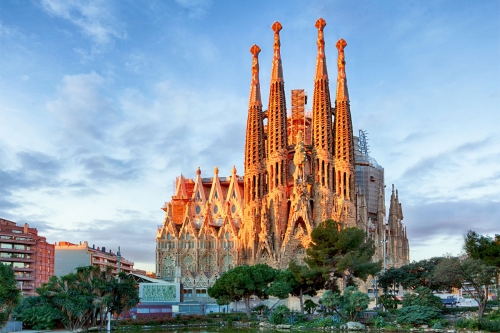
Bien sûr, il n´est pas vrai que la Catalogne « a été ouverte à la modernité de la Réforme protestante » (à quelques exceptions près, les Catalans étaient farouchement catholiques), que la Catalogne était une puissance maritime (la puissance méditerranéenne était la Couronne d’Aragon avec sa présence dans les îles de la Méditerranée, en Italie, en Grèce et à Byzance) et que Madrid ‒«une aberration de choix géographique qui a déterminé le destin historique de l´Espagne» comme le remarque Alain Santacreu‒ était une sorte de capitale sous-développée dans les mains des «hidalgos, des propriétaires terriens et de la bourgeoisie rentière, alors que la côte basque (cantabrique) et catalane (méditerranée) se sont développées industriellement en raison de son caractère thalassocratique mais les zones industrielles de l’Allemagne sont concentrées dans la Ruhr et celle de la France dans les régions limitrophes de l’Allemagne et du Benelux. Or ce sont des zones continentales et très peu thalassocratiques apparemment. Et même pour Madrid, nous noterons au passage que les plus grandes capitales européennes (Paris, Berlin, Rome, Moscou) sont situées à l´intérieur des terres. C’est comme si les décisions politiques ‒y compris celles du général Franco‒ qui privilégiaient l’infrastructure côtière (la politique du tourisme de plage) au détriment du développement de l’intérieur de la péninsule ibérique, n’avaient pas été mises en pratique. C’était peut-être une méthode, comme une autre, de gagner le soutien inconditionnel des bourgeoisies basques et catalanes mais ce qui est certain en tout cas c’est que par cette politique franquiste, les Catalans se sont enrichis et sans aucun scrupule. La même méthode a été suivie par les différents gouvernements démocratiques nés du régime de 1978.
Quoi qu’il en soit, dans les thalassocraties on trouve l’émergence de la modernité, du capitalisme (et son mentor, le protestantisme), le commerce libre, qui furent en effet les attributs de la «bourgeoisie catalane», une modernité maritime en ce qu’elle «consacre le primat de l’économie sur le politique» contre le «capitalisme tellurique» de Madrid (en espagnol, le terme “tellurique” se réfère plus au souterrain qu’au terrestre). Cette modernité soulignerait le caractère profondément économiste de la Catalogne. Et nous avons toujours défendu “le primat du politique sur l’économie”. La Catalogne des indépendantistes rejoint effectivement le modèle des puissances thalassocratiques, commerciales, maritimes, universelles, liquides c’est-à-dire sans espace et ouvertes à tout vent, déracinées et sans frontière. La géopolitique identitaire à l’envers, en somme l’apologie du «petit nationalisme» et de la modernité capitaliste. Carthage contre Rome? Or ne serait-ce pas mieux Rome contre Carthage ?
Une apologie de la modernité capitaliste
Si l’alternative « monde unipolaire » et « monde multipolaire » rencontre l’opposition Mer et Terre c’est qu’un monde multipolaire délite la notion territoriale de frontière. Dans le monde actuel, la logique de la terre est plus que jamais confondue avec une logique continentale, celle de l’Europe dans son ensemble (ou celle de l’Eurasie), tandis que la logique maritime, incarnée jusqu’à récemment par l’Angleterre, est désormais celle de l’Empire, l’Amérique du Nord. De même, pourrait-on dire, l’alternative entre la construction de l’Union européenne en tant que simple espace de libre-échange transatlantique et sa construction en tant que puissance continentale autonome, montre encore plus cette opposition de la Terre et de la Mer dans la mesure où la mer est du côté du commerce, tandis que la terre est du côté du politique pris dans son essence». L’histoire schmittienne se présenterait donc comme une opposition entre «ceux qui vivent sur la terre ferme» et «ceux qui écument les mers», histoire qui a trouvé son expression la plus fascinante dans la lutte entre l’Angleterre et la France napoléonienne, le dualisme existant entre terre et mer marquant de son empreinte toute la période récente de l’histoire européenne.
Le Nomos de l´Espagne
Selon Santacreu, la « discorde séculaire » entre la Catalogne et la Castille a empêché la constitution d’un ordre national fondamental et c’est ce qui expliquerait pourquoi « l’Espagne serait restée sans nomos». Selon Schmitt lui-même, «le nomos est la forme immédiate dans laquelle devient visible, en termes d’espace, l’ordre politique et social d’un peuple… Nomos est la mesure qui distribue et divise le sol du monde dans un ordre particulier, et, en vertu de cela, représente la forme d’organisation politique, sociale et religieuse…». Le nomos espagnol est organisé en deux niveaux: sa répartition territoriale du pouvoir parmi dix-sept Communautés autonomes et son intégration inconditionnelle dans le projet de l’Union européenne. Un nomos qui a été un succès de la coexistence pacifique des peuples et un exemple pour de nombreux autres pays. La communauté super-autonome de la Catalogne fait partie de ce nomos sans interruption depuis 1479.

La Catalogne est un grand pays, un peuple formidable, un exemple constant pour toutes les générations d’espagnols, un miroir où l’effort, le travail, le savoir-faire, l’art, le dialogue se reflètent partout mais après quarante ans d’endoctrinement indépendantiste, à travers les médias publics couverts par tous les espagnols, à travers une intolérable propagande anti espagnole, l’«affaire Catalogne» semble avoir atteint un point de non-retour. Il est fort probable que l’Europe de Bruxelles (ou ce qu’il en restera après les élections italiennes) changera de stratégie et, compte tenu du caractère insoluble du problème catalan, décidera d’intervenir pour qu’un nouvel État-nation puisse être construit sur le continent sous le nom de République de Catalogne. C’est une conséquence logique: l’Europe mercantiliste, l’Europe du libre-échange, laboratoire de pratiques de la mondialisation néolibérale, soutiendra effectivement au final le “capitalisme thalassocratique” de la grande Catalogne. L’Europe ne se rangera pas derrière l’Espagne : l’UE n’aime pas les entités patriotiques. Si l’Union européenne arrivait à reconnaître l’éventuelle indépendance de la République de Catalogne, le Royaume d’Espagne abandonnerait alors le “club commercial” européen. Cela précipiterait encore plus la fin programmée de l’Union européenne. Peut-être sommes-nous alors confrontés à une opportunité historique: liquider l’UE et jeter les bases d’une Europe néo-carolingienne, terrestre, non-maritime, continentale, non-thalassocratique (comme l’embryon du Grossraum eurasien), l’Europe de Visegrad, l’Europe de l’Empire austro-hongrois. Rappelons que Charlemagne étendit son empire aux soi-disant «marches hispaniques» ‒ zone des futurs territoires de Catalogne, d’Aragon et de Navarre, noyaux fondateurs, avec les Asturies et la Castille, de la nation espagnole. Le problème n’est donc pas « la Catalogne ou l’Espagne ». Le problème est l’oligarchie catalane et l’extrême gauche espagnole? Une cleptocratie qui pratique le népotisme et le clientélisme et nourrit le sentiment anti-espagnol.
Désespagnolisation: en finir avec le régime de 1978
S’il y a quelque chose sur laquelle les authentiques défenseurs de l’Espagne sont tous tombé d’accord, et aussi surprenant que cela puisse paraître y compris, avec les séparatistes, les terroristes et les gauchistes de Catalogne, c’est qu’une fois pour toutes «il faut en finir avec le régime de 1978». La classe politique et économique catalane accumule plus de trois cent affaires judiciaires pour corruption, contre cent cinquante en Andalousie et cent quarante à Madrid. La Constitution espagnole de 1978 est la loi fondamentale. Le texte fut développé par la voie du consensus et pour la première fois dans l’histoire espagnole, elle fut approuvée par référendum pendant le processus de ce qu’on a appelé la « transition ».

En fait, depuis cette date, une sorte d’alliance de circonstances s’était formée qui avait ouvert l’Espagne à sa dislocation et à sa mutilation future, par le jeu de l’alternance des grands partis de gouvernement (l’un, prétendument de droite, l’autre, hypothétiquement de gauche) et la complicité intéressée et manifeste (si ce n’est même parfois le soutien inconditionnel en échange de quelques prébendes financières) de l’oligarchie nationaliste basque et catalane. Il faut voir l’impunité avec laquelle ces quatre acteurs (version politique des quatre cavaliers de l’Apocalypse) nous ont conduit à quarante ans de tyrannie, de corruption, de chantage de “désespagnolisation“, tandis qu’une prétendue droite se spécialisait en “expertocratie” et en “technocratie” de la gestion des ressources, comme simple filiale d’un gouvernement mondial néolibéral, et que l’hypothétique gauche prenait le contrôle de tous les moyens médiatiques, universitaires, éducatifs et artistiques en pariant sur l’internationalisation des conflits et la protection des “minorités” en même temps qu’elle tissait une alliance contre nature avec les vieux nationalistes.
La Constitution de 1978, malgré le mythe de son intangibilité, n’est pas intouchable même si on nous a répété à satiété qu’elle ne permettrait seulement que des réformes ou des modifications mineures et ponctuelles. Or ce qui s’impose aujourd’hui, ce n’est pas de la modifier mais de la remplacer. Si nous souhaitons «liquider le régime de 78», ce n’est justement pas, comme le veulent les “traîtres” pour nourrir une fois de plus les démons que son approbation lâcha mais pour revenir en arrière et tout recommencer.
La Constitution de 78 consacrait un modèle d’autonomie territoriale diabolique, simplement conçu comme un compromis pour pacifier des territoires supposés réticents à une nation unitaire. Elle a ouvert la porte à l’existence de “nationalités” , un concept qui a été immédiatement repris par les rebelles pour breveter leur « vie démocratique espagnole”, après la dissolution des institutions organiques du régime dirigé par Francisco Franco, leur “différentialisme”, alors que la “nationalité” est un concept exclusivement civil de caractère personnel (la “Nation”, c’est l’Espagne, la “nationalité” ne peut qu’être espagnole, malgré des identités régionales, qui peuvent effectivement être aragonaise, catalane ou murcienne) mais surtout pas une délimitation territoriale de caractère historique et politique.
Peut-être qu’à ce moment fatidique de 78, il aurait été plus raisonnable de définir un “système fédéral”, mais la mémoire historique bloqua les grands esprits de nos «pères de la Constitution». Ils ont alors préféré créer une monstruosité régionale qui ne satisfaisait personne et portait en son sein le germe de la dislocation. En effet, “fédérer” n’impliquait pas forcément de “négocier” une association entre des acteurs nationaux sur un pied d’égalité, ce qui n’était d’ailleurs pas le cas alors. ”Fédérer” aurait pu être conçu et utilisé à la carte en une sorte d’exercice d’aménagement du territoire, non du pouvoir politique, mais sous forme de gestion administrative, c’est-à-dire comme un mode de “décentralisation” sous contrôle. Fédérer ne suppose pas transférer automatiquement le pouvoir législatif et exécutif de l’impôt, de l’éducation, de la santé, etc., mais enjoint de déléguer, de partager la mise en exécution des lois de l’État et la gestion des ressources financières du territoire, à une direction politique supérieure, l’État fédéral au sommet. Enfin, fédérer, malgré la mauvaise presse qui entoure ce concept est un système flexible qui peut s’adapter à différentes circonstances et éventualités, comme en témoigne la variété des “États fédéraux”, tous différents à la fois dans leur exécution et leur matérialisation.

La Fédération aurait donc pu être la solution de l’époque, mais elle ne peut plus l’être maintenant. A cette époque, il aurait en effet été possible de “fédérer” deux entités régionales problématiques (le Pays Basque et la Catalogne), mais on avait choisi une autre voie, on choisit de «communautariser, d’autonomiser» à dix-sept, certaines de ses entités régionales constituant d’ailleurs de véritables aberrations historiques sur le papier. Alors qu’il aurait été possible de construire réellement cette fédération. Ce ne fut donc pas possible et il n’est plus possible de le faire maintenant, il n’est plus possible et qu’on se le dise de fédérer l’Espagne, il faut la réunir, la rassembler, réunifier une Espagne aujourd’hui en morceaux, une Espagne cassée, une Espagne brisée, à cause des héritiers du «régime de 78» et des traîtres qui veulent aujourd’hui l’achever, seulement pour la remplacer par une «confédération internationale des peuples ibériques», une confédération haineuse et revancharde, où régnerait le pire du stalinisme.
Il suffit de voir comment se forge cette alliance de conspiration entre les nationalistes (la bourgeoisie basque et catalane, jalouse de ses prébendes) et les internationalistes (les communistes et les terroristes) pour comprendre ce qui nous attend et quel prix on devra payer. Car oui, tout cela aura un prix: c’est celui de la fin de l’Espagne, de l’achèvement de l’Espagne, de l’Espagne par terre.





 del.icio.us
del.icio.us
 Digg
Digg


 ** Roland Gori, psychanalyste, professeur honoraire de psychopathologie clinique à Aix-Marseille Université, président de l’Association Appel des appels.
** Roland Gori, psychanalyste, professeur honoraire de psychopathologie clinique à Aix-Marseille Université, président de l’Association Appel des appels.  jpv/rmh. Depuis sa prise de fonction, Jean-Michel Blanquer, ministre de l’Education nationale du gouvernement français présidé par Emmanuel Macron, a annoncé les nouveaux changements envisagés dans le système scolaire français allant à l’encontre des «réformes» de son prédécesseur socialiste Najat Vallaud-Belkacem (2014–2017). Selon Blanquer, voici les apprentissages fondamentaux au premier plan pour les élèves français: lecture, écriture et calcul. Au primaire, il y aura à nouveau la dictée, la grammaire et les fables de La Fontaine. Tout établissement aura sa chorale. Au collège, l’enseignement du latin et les classes bilingues seront réintroduits. On parle d’uniformes scolaires et de l’interdiction des portables. Le discours humaniste du ministre porte sur des noms tels Montaigne et Montessori et les notions humanisme et nation réapparaissent fréquemment. Au ministère de la rue de Grenelle, il a baptisé une salle de réunion du nom de Louis Germain, l’instituteur d’Albert Camus. Une partie des enseignants, très critiques envers les réformes entreprises par l’ancienne ministre, espèrent – suite au discours du nouveau responsable – un changement positif pour l’enseignement de leurs élèves.
jpv/rmh. Depuis sa prise de fonction, Jean-Michel Blanquer, ministre de l’Education nationale du gouvernement français présidé par Emmanuel Macron, a annoncé les nouveaux changements envisagés dans le système scolaire français allant à l’encontre des «réformes» de son prédécesseur socialiste Najat Vallaud-Belkacem (2014–2017). Selon Blanquer, voici les apprentissages fondamentaux au premier plan pour les élèves français: lecture, écriture et calcul. Au primaire, il y aura à nouveau la dictée, la grammaire et les fables de La Fontaine. Tout établissement aura sa chorale. Au collège, l’enseignement du latin et les classes bilingues seront réintroduits. On parle d’uniformes scolaires et de l’interdiction des portables. Le discours humaniste du ministre porte sur des noms tels Montaigne et Montessori et les notions humanisme et nation réapparaissent fréquemment. Au ministère de la rue de Grenelle, il a baptisé une salle de réunion du nom de Louis Germain, l’instituteur d’Albert Camus. Une partie des enseignants, très critiques envers les réformes entreprises par l’ancienne ministre, espèrent – suite au discours du nouveau responsable – un changement positif pour l’enseignement de leurs élèves.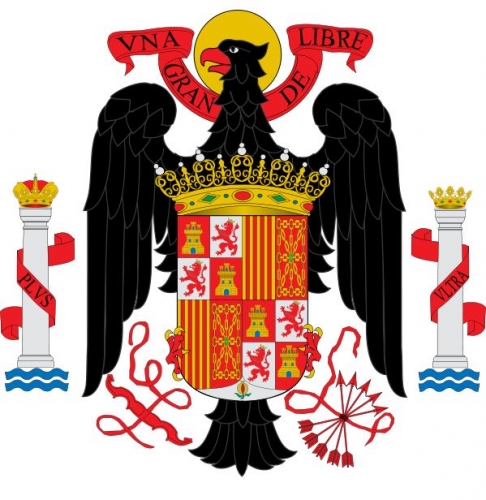



 En 2014, dans le sillage de la « Manif pour Tous », Gaultier Bès se faisait connaître par Nos limites. Pour une écologie radicale, un essai co-écrit avec Marianne Durano et Axel Nørgaard Rokvam. Le succès de cet ouvrage lui permit de lancer en compagnie de la journaliste du groupe Le Figaro, Eugénie Bastié, et de Paul Piccarreta, la revue trimestrielle d’écologie intégrale d’expression chrétienne Limite.
En 2014, dans le sillage de la « Manif pour Tous », Gaultier Bès se faisait connaître par Nos limites. Pour une écologie radicale, un essai co-écrit avec Marianne Durano et Axel Nørgaard Rokvam. Le succès de cet ouvrage lui permit de lancer en compagnie de la journaliste du groupe Le Figaro, Eugénie Bastié, et de Paul Piccarreta, la revue trimestrielle d’écologie intégrale d’expression chrétienne Limite.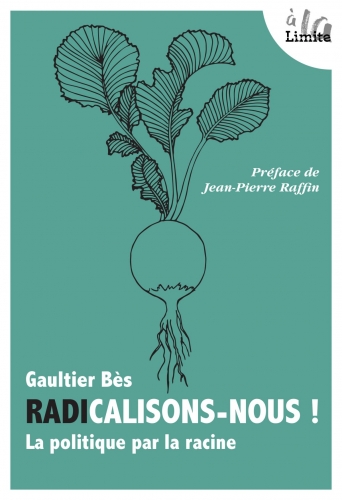 Dans sa préface, Jean-Pierre Raffin estime quant à lui que la radicalité « est une notion noble qui fait appel aux fondements, aux racines de notre être, de notre vie en société puisque l’être humain est un être social qui, dépourvu de liens, disparaît ou sombre dans la démence (p. 7) ». Gaultier Bès prévient aussi que « sans la profondeur de l’enracinement, la radicalité se condamne à n’agir qu’en surface et se dégrade en extrémisme. Sans la vigueur de la radicalité, l’enracinement n’est qu’un racornissement, qui, faute de lumière, conduit à l’atrophie (p. 16) ». Il se réfère beaucoup à la philosophe Simone Weil malgré une erreur sur l’année de son décès, 1943 et non 1944, en particulier à son célèbre essai sur l’Enracinement.
Dans sa préface, Jean-Pierre Raffin estime quant à lui que la radicalité « est une notion noble qui fait appel aux fondements, aux racines de notre être, de notre vie en société puisque l’être humain est un être social qui, dépourvu de liens, disparaît ou sombre dans la démence (p. 7) ». Gaultier Bès prévient aussi que « sans la profondeur de l’enracinement, la radicalité se condamne à n’agir qu’en surface et se dégrade en extrémisme. Sans la vigueur de la radicalité, l’enracinement n’est qu’un racornissement, qui, faute de lumière, conduit à l’atrophie (p. 16) ». Il se réfère beaucoup à la philosophe Simone Weil malgré une erreur sur l’année de son décès, 1943 et non 1944, en particulier à son célèbre essai sur l’Enracinement.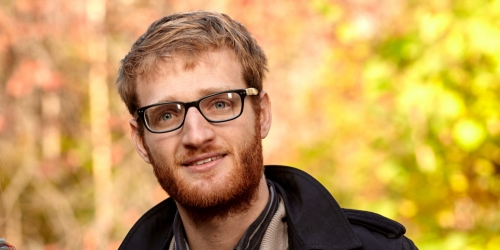

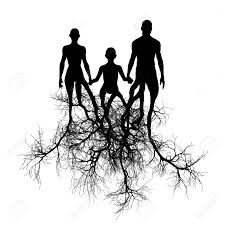 Gaultier Bès fait finalement trop confiance aux racines. Il a beau distinguer « l’image végétale des “ racines [à] celle, toute minérale, des “ sources ” (p. 25) », il se méprend puisque l’essence bioculturelle de l’homme procède à la fois aux racines, aux sources et aux origines. Ces dernières sont les grandes oubliées de son propos. Ce n’est toutefois qu’en prenant acte de cette tridimensionnalité que l’enracinement sera complet. Pourtant, il prend soin de préciser que « le global n’est pas l’universel, c’est l’extension d’un local hégémonique (p. 76) ». L’avertissement fait penser à l’opuscule du Comité invisible, À nos amis. Le local « est une contraction du global (4) ». « Il y a tout à perdre à revendiquer le local contre le global, estime le Comité invisible. Le local n’est pas la rassurante alternative à la globalisation, mais son produit universel : avant que le ne soit globalisé, le lieu où j’habite était seulement mon territoire familier, je ne le connaissais pas comme “ local ”. Le local n’est que l’envers du global, son résidu, sa sécrétion, et non ce qui peut le faire éclater (5). » Outre le collectif d’ultra-gauche, Guillaume Faye s’interrogeait sur l’ambivalence du concept. « L’enracinement doit […] se vivre comme point de départ, la patrie comme base pour l’action extérieure et non comme “ logés ” à aménager. Il faut se garder de vivre l’enracinement sous sa forme “ domestique ”, qui tend aujourd’hui à prévaloir : chaque peuple “ chez soi ” pacifiquement enfermé dans ses frontières; tous folkloriquement “ enracinés ” selon une ordonnance universelle. Ce type d’enracinement convient parfaitement aux idéologues mondialistes. Il autorise la construction d’une superstructure planétaire où s’intégreraient, privés de leur sens, normés selon le même modèle, les nouveaux “ enracinés ” (6). »
Gaultier Bès fait finalement trop confiance aux racines. Il a beau distinguer « l’image végétale des “ racines [à] celle, toute minérale, des “ sources ” (p. 25) », il se méprend puisque l’essence bioculturelle de l’homme procède à la fois aux racines, aux sources et aux origines. Ces dernières sont les grandes oubliées de son propos. Ce n’est toutefois qu’en prenant acte de cette tridimensionnalité que l’enracinement sera complet. Pourtant, il prend soin de préciser que « le global n’est pas l’universel, c’est l’extension d’un local hégémonique (p. 76) ». L’avertissement fait penser à l’opuscule du Comité invisible, À nos amis. Le local « est une contraction du global (4) ». « Il y a tout à perdre à revendiquer le local contre le global, estime le Comité invisible. Le local n’est pas la rassurante alternative à la globalisation, mais son produit universel : avant que le ne soit globalisé, le lieu où j’habite était seulement mon territoire familier, je ne le connaissais pas comme “ local ”. Le local n’est que l’envers du global, son résidu, sa sécrétion, et non ce qui peut le faire éclater (5). » Outre le collectif d’ultra-gauche, Guillaume Faye s’interrogeait sur l’ambivalence du concept. « L’enracinement doit […] se vivre comme point de départ, la patrie comme base pour l’action extérieure et non comme “ logés ” à aménager. Il faut se garder de vivre l’enracinement sous sa forme “ domestique ”, qui tend aujourd’hui à prévaloir : chaque peuple “ chez soi ” pacifiquement enfermé dans ses frontières; tous folkloriquement “ enracinés ” selon une ordonnance universelle. Ce type d’enracinement convient parfaitement aux idéologues mondialistes. Il autorise la construction d’une superstructure planétaire où s’intégreraient, privés de leur sens, normés selon le même modèle, les nouveaux “ enracinés ” (6). »
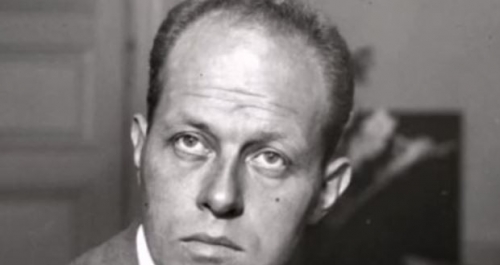
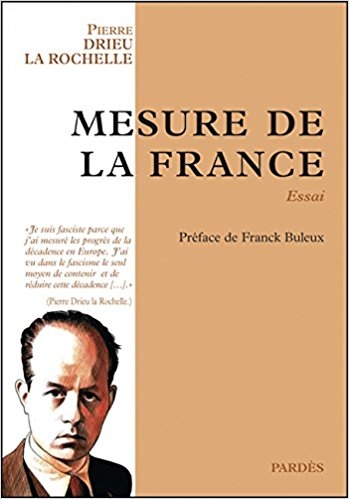 L’intérêt essentiel de cet essai est de souligner le fait, pour Drieu la Rochelle, de ne pas se satisfaire, comme les nationalistes français, de la victoire sur l’Allemagne lors de la Première Guerre mondiale, qui s’est soldée par le Diktat de Versailles, en 1919. Au-delà de l’Europe exsangue, meurtrie par cette guerre civile européenne, Drieu la Rochelle nous propose une
L’intérêt essentiel de cet essai est de souligner le fait, pour Drieu la Rochelle, de ne pas se satisfaire, comme les nationalistes français, de la victoire sur l’Allemagne lors de la Première Guerre mondiale, qui s’est soldée par le Diktat de Versailles, en 1919. Au-delà de l’Europe exsangue, meurtrie par cette guerre civile européenne, Drieu la Rochelle nous propose une 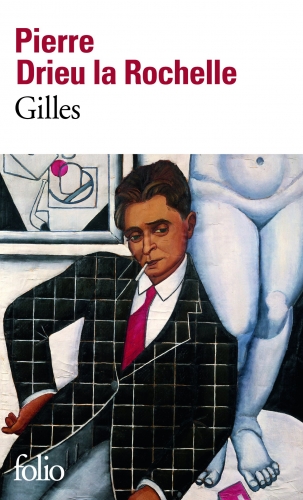 Face à l’euphorie de l’éphémère victoire, cette alliance européenne (car il s’agit bien de cela) est une « question de vie ou de mort », selon l’auteur lui-même : ne pas aller vers cette union nous entraînerait inéluctablement et irrésistiblement vers d’autres conflits. Intégrer l’Allemagne, contre laquelle la France vient de combattre, avant que celle-ci ne se tourne vers d’autres alliances, plus à l’Est. N’oublions pas que l’Union soviétique est en train de se construire, à l’intérieur, comme une véritable fortification socialiste (et un modèle pour beaucoup !) et qu’en serait-il de nous, Français, si l’Europe centrale (Mitteleuropa) se tournait vers elle ? L’insularité britannique et la défaite allemande ne sont-ils pas des risques de division du Vieux Continent ? La perfide Albion tournée vers l’Amérique et l’Allemagne, humiliée par le traité de Versailles, lorgnant vers l’Empire communiste… Dans cette saisissante hypothèse, que resterait-il de la France éternelle ?
Face à l’euphorie de l’éphémère victoire, cette alliance européenne (car il s’agit bien de cela) est une « question de vie ou de mort », selon l’auteur lui-même : ne pas aller vers cette union nous entraînerait inéluctablement et irrésistiblement vers d’autres conflits. Intégrer l’Allemagne, contre laquelle la France vient de combattre, avant que celle-ci ne se tourne vers d’autres alliances, plus à l’Est. N’oublions pas que l’Union soviétique est en train de se construire, à l’intérieur, comme une véritable fortification socialiste (et un modèle pour beaucoup !) et qu’en serait-il de nous, Français, si l’Europe centrale (Mitteleuropa) se tournait vers elle ? L’insularité britannique et la défaite allemande ne sont-ils pas des risques de division du Vieux Continent ? La perfide Albion tournée vers l’Amérique et l’Allemagne, humiliée par le traité de Versailles, lorgnant vers l’Empire communiste… Dans cette saisissante hypothèse, que resterait-il de la France éternelle ?








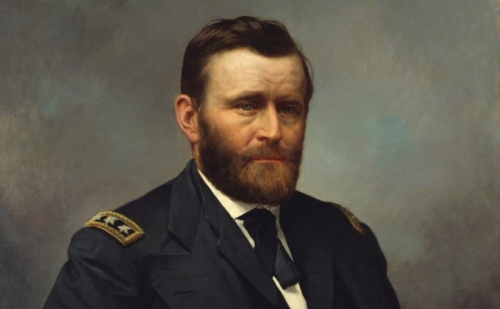
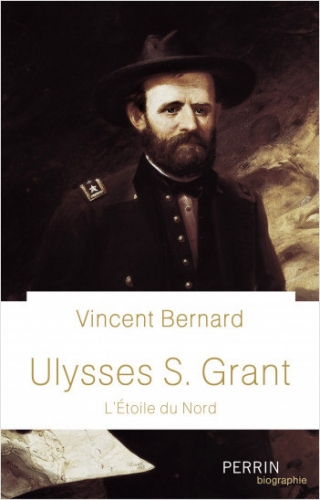 Ulysses S. Grant n’a pas eu une vie mais plusieurs. Vincent Bernard nous fait découvrir celui qui fut tour à tour, un enfant timide et effacé de l
Ulysses S. Grant n’a pas eu une vie mais plusieurs. Vincent Bernard nous fait découvrir celui qui fut tour à tour, un enfant timide et effacé de l
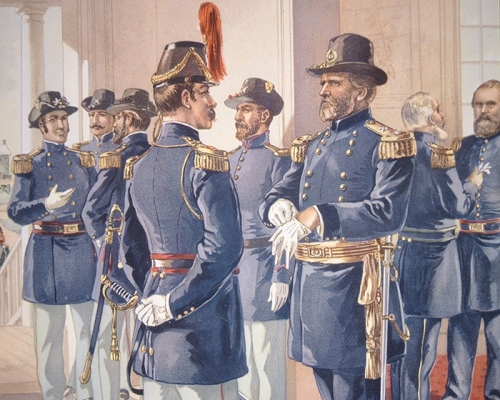
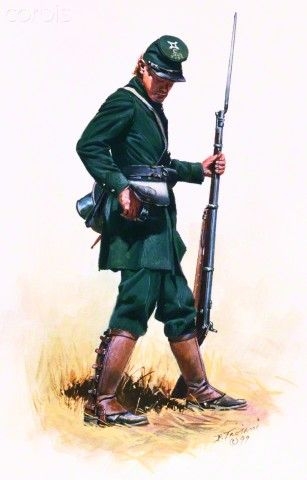 Grant est lucide au sujet de cette Guerre Civile. Voici comment il la considère.
Grant est lucide au sujet de cette Guerre Civile. Voici comment il la considère. 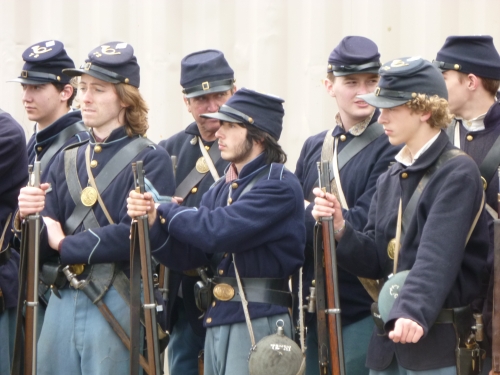 De son vivant et après sa mort, d’aucuns opposeront le «
De son vivant et après sa mort, d’aucuns opposeront le « 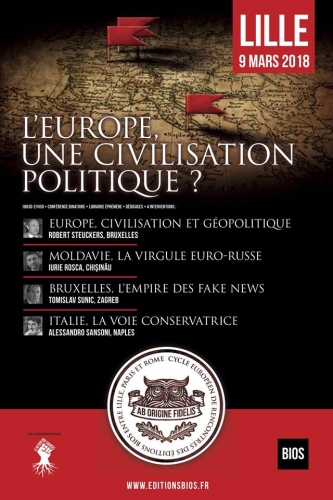


 Robert Steuckers sur Radio Courtoisie :
Robert Steuckers sur Radio Courtoisie : 


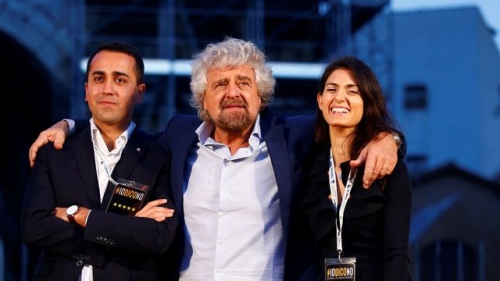


 Laquelle de ces opinions est résistible ou irrésistible ? Et au cas où ce classement pourrait être établi, selon quel critère ? Quel « traitement » appliqué à l’opinion (rhétorique, mise en scène ,répétition..) fait que le choix d’accord/ pas d’accord est ainsi faussé ? Où passe la frontière entre le désir licite de convaincre ou de séduire, ce que nous tentons de faire la moitié du temps quand nous ouvrons la bouche, et la manipulation scandaleuse?
Laquelle de ces opinions est résistible ou irrésistible ? Et au cas où ce classement pourrait être établi, selon quel critère ? Quel « traitement » appliqué à l’opinion (rhétorique, mise en scène ,répétition..) fait que le choix d’accord/ pas d’accord est ainsi faussé ? Où passe la frontière entre le désir licite de convaincre ou de séduire, ce que nous tentons de faire la moitié du temps quand nous ouvrons la bouche, et la manipulation scandaleuse?
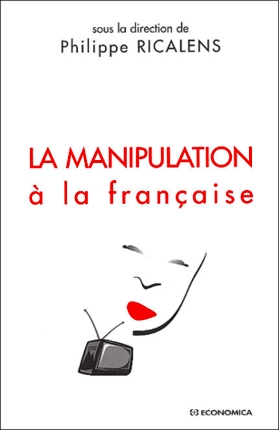 La catégorie manipulation recouvrirait pratiquement toutes les stratégies par l’information: désinformation, propagande, mystification, endoctrinement, stratagèmes.
La catégorie manipulation recouvrirait pratiquement toutes les stratégies par l’information: désinformation, propagande, mystification, endoctrinement, stratagèmes. 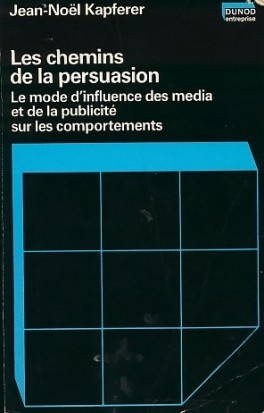 - Des effets plus généraux de manipulation à travers les médias. Leur capacité globale à produire tel effet sur l’opinion en situation réelle, entendez hors laboratoire et soumise à une pluralité de messages, serait alors l’objet d’une ‘science des médias » (media studies anglo-saxonne ou sociologie des médias). Celle-ci tenterait de décrire la nature et les limites du « pouvoir des médias », zone qui circonscrirait le domaine des manipulations efficaces ou non
- Des effets plus généraux de manipulation à travers les médias. Leur capacité globale à produire tel effet sur l’opinion en situation réelle, entendez hors laboratoire et soumise à une pluralité de messages, serait alors l’objet d’une ‘science des médias » (media studies anglo-saxonne ou sociologie des médias). Celle-ci tenterait de décrire la nature et les limites du « pouvoir des médias », zone qui circonscrirait le domaine des manipulations efficaces ou non





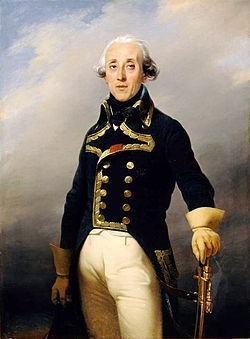 Très tôt, le mot « habit » est associé dans notre langue à l’idée de « maintien » de « tenue », au sens de « tenir sa place et son rang ».
Très tôt, le mot « habit » est associé dans notre langue à l’idée de « maintien » de « tenue », au sens de « tenir sa place et son rang ».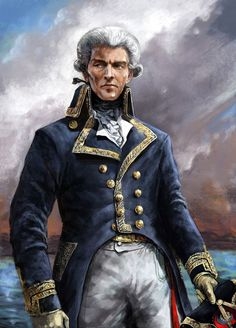 A l’inverse, toute manifestation de démesure (ὕϐρις), chez les hommes comme chez les dieux, entraîne une catastrophe. Nous sommes ici aux antipodes de ce que le philosophe Heidegger décèle dans la modernité occidentale, à savoir la « métaphysique de l’illimité » — l’appétit du « toujours plus », auquel nous devons opposer la logique du « toujours mieux ».
A l’inverse, toute manifestation de démesure (ὕϐρις), chez les hommes comme chez les dieux, entraîne une catastrophe. Nous sommes ici aux antipodes de ce que le philosophe Heidegger décèle dans la modernité occidentale, à savoir la « métaphysique de l’illimité » — l’appétit du « toujours plus », auquel nous devons opposer la logique du « toujours mieux ».
 A l’époque moderne, la figure du gentilhomme représente la synthèse et l’aboutissement de ces divers héritages, à travers l’équilibre entre les talents de l’homme d’épée et de l’homme d’esprit, alliant élégance morale, distinction, courage et maîtrise de soi. Tel est l’idéal, largement partagé à travers toute l’Europe, que s’efforcent d’atteindre le Junker prussien et le gentleman britannique.
A l’époque moderne, la figure du gentilhomme représente la synthèse et l’aboutissement de ces divers héritages, à travers l’équilibre entre les talents de l’homme d’épée et de l’homme d’esprit, alliant élégance morale, distinction, courage et maîtrise de soi. Tel est l’idéal, largement partagé à travers toute l’Europe, que s’efforcent d’atteindre le Junker prussien et le gentleman britannique. A toutes ces formes d’abandon de soi-même, il faut précisément opposer la notion de « tenue ». Celle-ci constitue une ascèse — ce qui n’implique pas nécessairement une vie « ascétique » : au-delà de son acception religieuse, passée dans le vocabulaire chrétien par l’intermédiaire du latin chrétien asceta, le mot est apparenté au grec ἄσκησις (« exercice »), qui désigne à l’origine divers types d’activités artistiques ou physiques, en particulier l’
A toutes ces formes d’abandon de soi-même, il faut précisément opposer la notion de « tenue ». Celle-ci constitue une ascèse — ce qui n’implique pas nécessairement une vie « ascétique » : au-delà de son acception religieuse, passée dans le vocabulaire chrétien par l’intermédiaire du latin chrétien asceta, le mot est apparenté au grec ἄσκησις (« exercice »), qui désigne à l’origine divers types d’activités artistiques ou physiques, en particulier l’



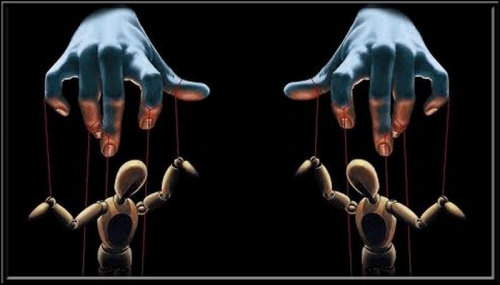
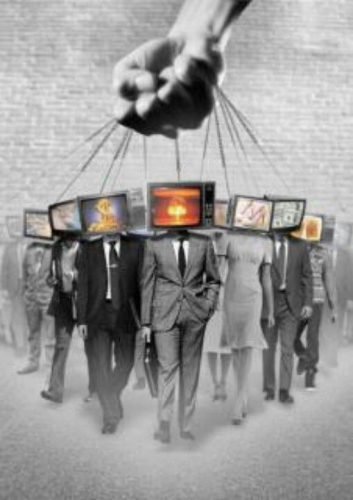
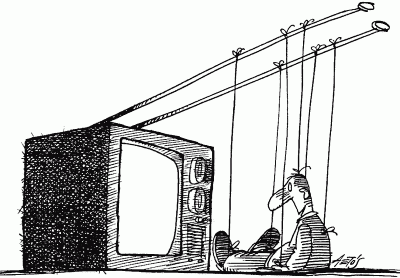
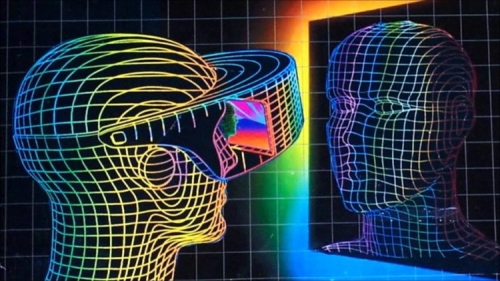


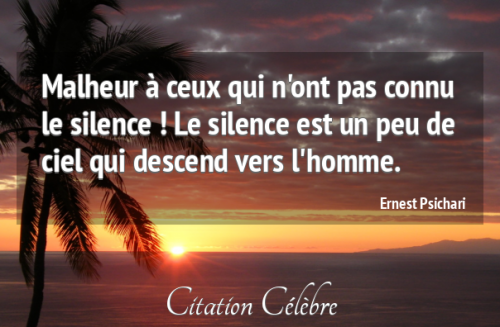
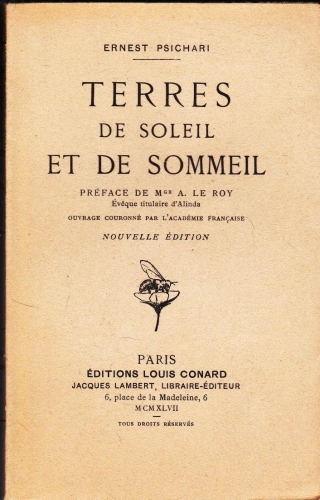 En rêve, le capitaine Nangès rencontre Timoléon d’Arc, un personnage de Servitude et grandeur militaires (1835) de Vigny. Le héros de Vigny envie le héros de Psichari. Il aurait aimé fouler en conquérant cette terre d’Afrique, pleine de charme et de volupté. Là, l’homme se purifie, s’épure, loin des « pourritures modernes ». Là, du moins, « quelque idéal reste encore ». En réponse, le capitaine Nangès évoque le mépris de la nation, le rejet du colonialisme. La métropole tient les glorieuses chevauchées des soldats en piètre estime. « Le bourgeois a la crainte de ce qu’il ne comprend pas. Il tremble aux mots d’infini, d’absolu. Le Sahara lui fait peur, comme la musique de Wagner. » Comme Ernst Jünger le décrira quelques années plus tard : « L’élémentaire réside en dehors de son monde idéal ; pour lui, l’élémentaire est l’irrationnel voire l’immoral. »
En rêve, le capitaine Nangès rencontre Timoléon d’Arc, un personnage de Servitude et grandeur militaires (1835) de Vigny. Le héros de Vigny envie le héros de Psichari. Il aurait aimé fouler en conquérant cette terre d’Afrique, pleine de charme et de volupté. Là, l’homme se purifie, s’épure, loin des « pourritures modernes ». Là, du moins, « quelque idéal reste encore ». En réponse, le capitaine Nangès évoque le mépris de la nation, le rejet du colonialisme. La métropole tient les glorieuses chevauchées des soldats en piètre estime. « Le bourgeois a la crainte de ce qu’il ne comprend pas. Il tremble aux mots d’infini, d’absolu. Le Sahara lui fait peur, comme la musique de Wagner. » Comme Ernst Jünger le décrira quelques années plus tard : « L’élémentaire réside en dehors de son monde idéal ; pour lui, l’élémentaire est l’irrationnel voire l’immoral. »